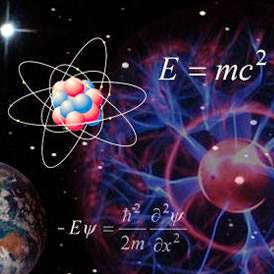 |
| Lasers are used to trap arrays of atoms within glass chambers made by ColdQuanta, a neutral atom quantum computing startup. COLDQUANTA INC. |
Topics: Computer Science, Laser, Quantum Computer, Quantum Mechanics
In a small basement laboratory, Harry Levine, a Harvard University graduate student in physics, can assemble a rudimentary computer in a fraction of a second. There isn't a processor chip in sight; his computer is powered by 51 rubidium atoms that reside in a glass cell the size of a matchbox. To create his computer, he lines up the atoms in single file, using a laser split into 51 beams. More lasers—six beams per atom—slow the atoms until they are nearly motionless. Then, with yet another set of lasers, he coaxes the atoms to interact with each other, and, in principle, perform calculations.
It's a quantum computer, which manipulates "qubits" that can encode zeroes and ones simultaneously in what's called a superposition state. If scaled up, it might vastly outperform conventional computers at certain tasks. But in the world of quantum computing, Levine's device is somewhat unusual. In the race to build a practical quantum device, investment has largely gone to qubits that can be built on silicon, such as tiny circuits of superconducting wire and small semiconductors structures known as quantum dots. Now, two recent studies have demonstrated the promise of the qubits Levine works with: neutral atoms. In one study, a group including Levine showed a quantum logic gate made of two neutral atoms could work with far fewer errors than ever before. And in another, researchers built 3D structures of carefully arranged atoms, showing that more qubits can be packed into a small space by taking advantage of the third dimension.
The advances, along with the arrival of venture capital funding, suggest neutral atoms could be on the upswing, says Dana Anderson, CEO of ColdQuanta, a Boulder, Colorado–based company that is developing an atom-based quantum computer. "We've done our homework," Anderson says. "This is really in the engineering arena now."
Arrays of atoms emerge as dark horse candidate to power quantum computers
Sophia Chen, Science Mag

No comments:
Post a Comment